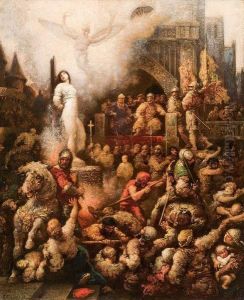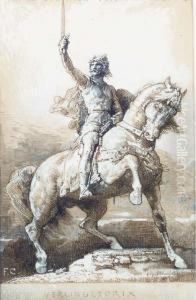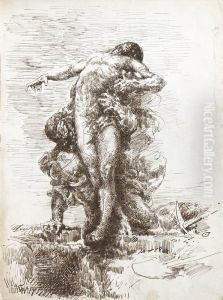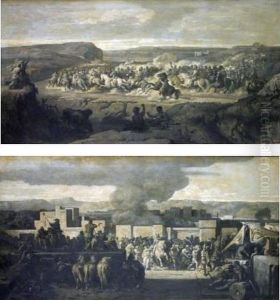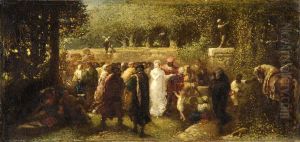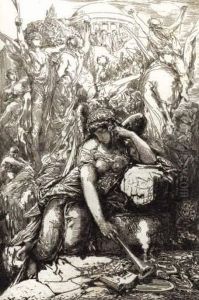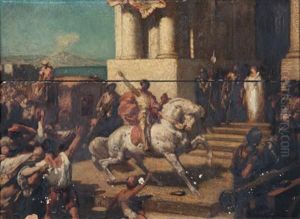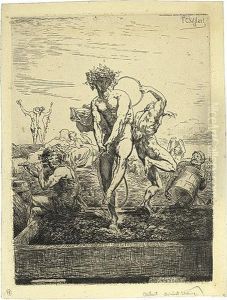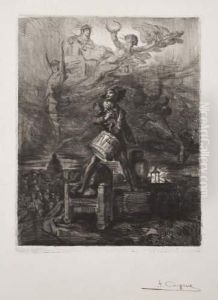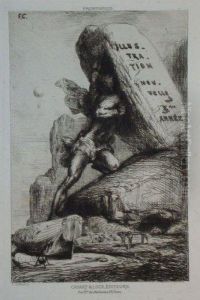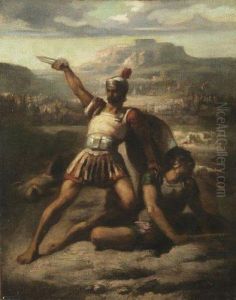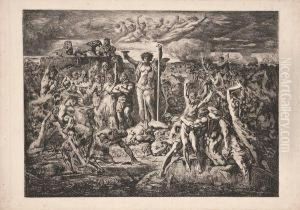Nicolas Francois Chifflart Paintings
Nicolas François Chifflart was a French artist born on March 20, 1825, in Saint-Omer, Pas-de-Calais. He was known for his illustrative works, which often contained elements of fantasy, history, and Romanticism.
Chifflart began his artistic education at the École des Beaux-Arts in Paris, where he studied under the tutelage of François-Édouard Picot, a neoclassical painter. He quickly demonstrated his skills and garnered attention for his dramatic compositions and technical proficiency.
Throughout his career, Chifflart worked across various mediums, including drawing, etching, and painting. His illustrations were particularly well-received, and he contributed to several publications of the time, illustrating texts by authors such as Victor Hugo. He had an avid interest in literature, and this often influenced his artistic themes, leading to works that depicted scenes from literary works or historical events with a romantic flair.
In 1851, Chifflart won the prestigious Prix de Rome for his painting 'Spartacus Fighting the Wild Beasts,' which allowed him to reside at the Villa Medici in Rome and study the works of the old masters. This experience further enriched his style and understanding of classical art.
Nicolas François Chifflart was also known for his participation in the Paris Salon, an annual exhibition of the French Academy of Fine Arts. His works were frequently exhibited there, and he received accolades and critical acclaim for his contributions to French art.
Despite his success, Chifflart remained a relatively private individual, and his personal life is not as well-documented as that of some of his contemporaries. Nevertheless, his artistic legacy is preserved in the detailed engravings and atmospheric paintings he left behind, which capture the romantic and sometimes somber spirit of the 19th century.
Chifflart's health began to decline in the latter part of his life, and he eventually passed away on March 7, 1901, in Paris. His works continue to be studied and admired for their intricate detail, historical significance, and the unique blend of realism and romanticism that characterizes his oeuvre.
